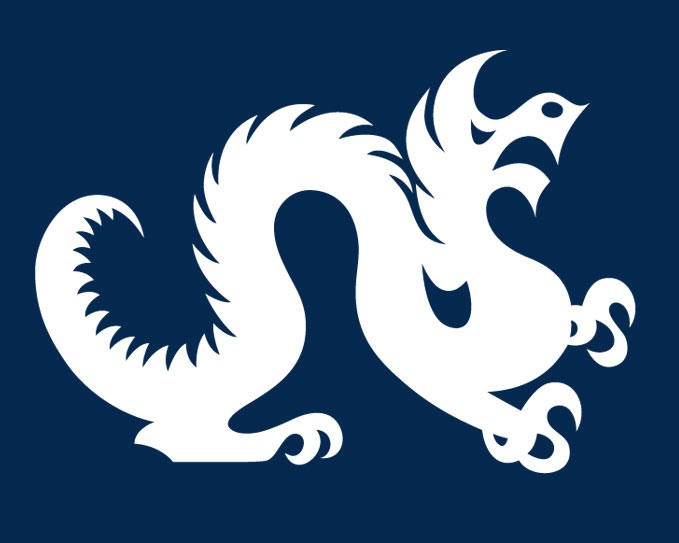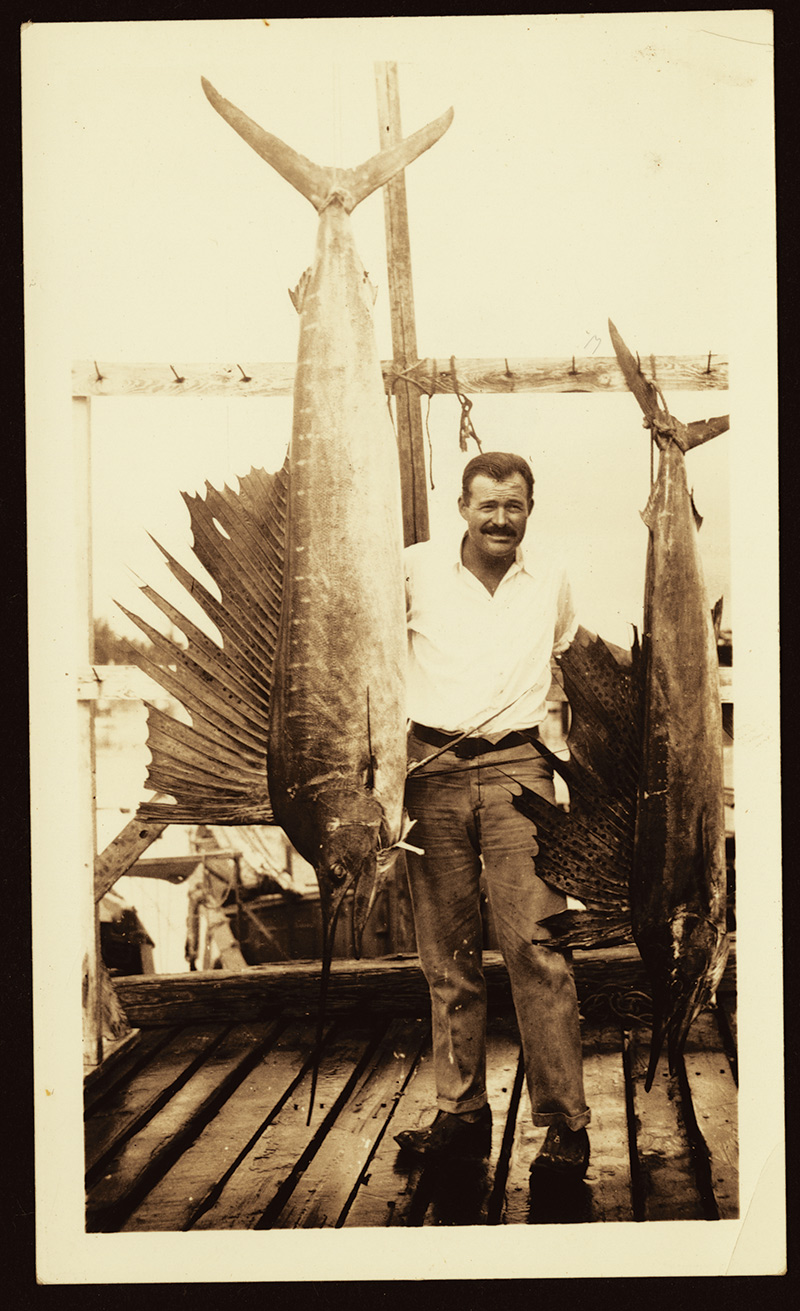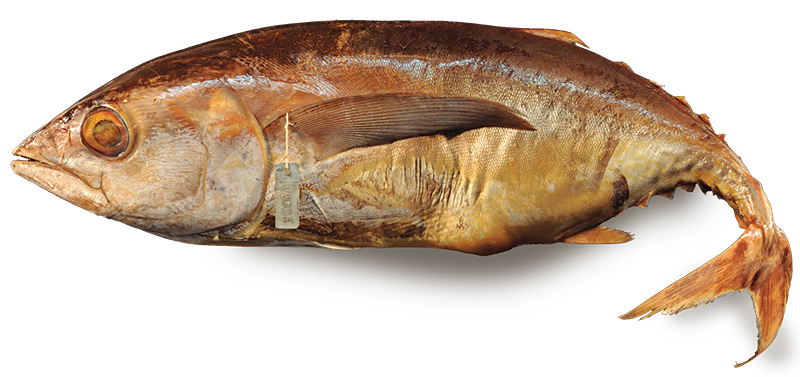The Academy of Natural Sciences’ collections include a fish specimen from 1935 whose name hints at an interesting passage in the institution’s history: Neomerinthe hemingway.
The bright, vermillion-colored spinycheek scorpionfish, as it is commonly known, is one of the few remaining traces of a little-known collaboration between Ernest Hemingway and the Academy’s staff in the years between 1934 and 1936. Though brief, the relationship survives in the Academy’s archives, in the history of the Academy’s development as an institution and even in Hemingway’s stories about the Atlantic Gulf Stream, including his most famous novella, “The Old Man and the Sea.”
One of the earliest correspondences between Hemingway and the Academy was a letter he wrote to Henry Fowler, the Academy’s fish curator, dated July 9, 1934.
It had been three months since Hemingway had met with Fowler and the Academy’s director, Charles Cadwalader, at the Academy in April 1934. The three had agreed to fish off Florida’s Gulf Coast to bolster the museum’s specimens, but after nine weeks Hemingway hadn’t heard back from the pair about setting up the trip.
“I thought I would be hearing from Mr. Cadwalader or yourself after I left Philadelphia,” the author wrote.
Fifteen days later, the pair arrived in Cuba to begin a scientific excursion on the writer’s boat, the Pilar.
Cadwalader had written to the renowned sportsman to ask if he could help the Academy “address the lack of knowledge about fishes in that region of the Atlantic….larger game fish are lacking.”
Cadwalader was one of the Academy’s most influential figures (founded in 1812, the Academy became a part of Drexel University in 2011). Independently wealthy, he led the Academy for decades for no salary while using his knowledge as an accomplished hunter and fisherman to help build the Academy’s Ornithology Department.
Fowler was the Academy’s first full-time curator of fish and co-founder of the American Society of Ichthyologists and Herpetologists. In 1961, Sports Illustrated reported, “Fowler has just completed the classification of the world’s 25,000 known fishes. His four-volume work, ‘A Catalog of World Fishes,’ sparkles with ink sketches by the author himself.”
The trio’s scheduled 10-day expedition stretched to five weeks, partly because they hadn’t caught much; on the last day, Cadwalader lost an enormous striped Marlin. “He was a very big fish and a hard fish to lose,” Hemingway wrote of the trip in the October 1934 issue of Esquire.
After the trip ended, Hemingway agreed to mail fish specimens packed in dry ice to Cadwalader and Fowler.
One of the specimens, a tuna, is one of only two albacore in the Academy’s collection.
Mark Sabaj Pérez, interim curator of fishes at the Academy, called Hemingway a skillful preservationist. “It looks much like it did the day it was caught, minus the color,” he says.
Robert Peck, the Academy’s senior fellow and author of its history, “A Glorious Enterprise,” believes Cadwalader approached Hemingway for legitimate scientific purposes, but also to raise the institution’s profile and coffers. “Cadwalader traveled in literary and social circles,” says Peck. During the Great Depression, Cadwalader used those connections to broaden support for the museum.
Cadwalader arranged for wealthy families such as the Vanderbilts and Carpenters (who later bought the Philadelphia Phillies) to sponsor expeditions to Africa and around the world. Peck believes that Hemingway may have helped the Academy in hopes of being invited on a subsidized safari to Africa, a place he longed to return.
By 1936, the collaboration had ended almost as quickly as it started, and contact between the author and museum ceased. But the scientists and author learned much from each other, says Peck. Fowler gained insight into the fish in that region from Hemingway, and Peck says Hemingway’s “sensitive and accurate portrayal of the Gulf Stream developed from his contact with Fowler.”





